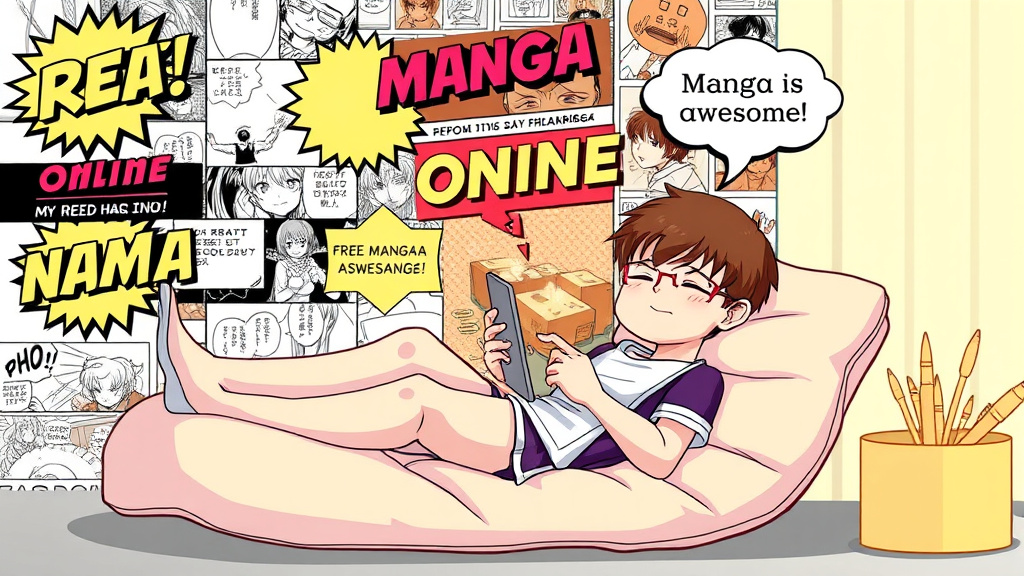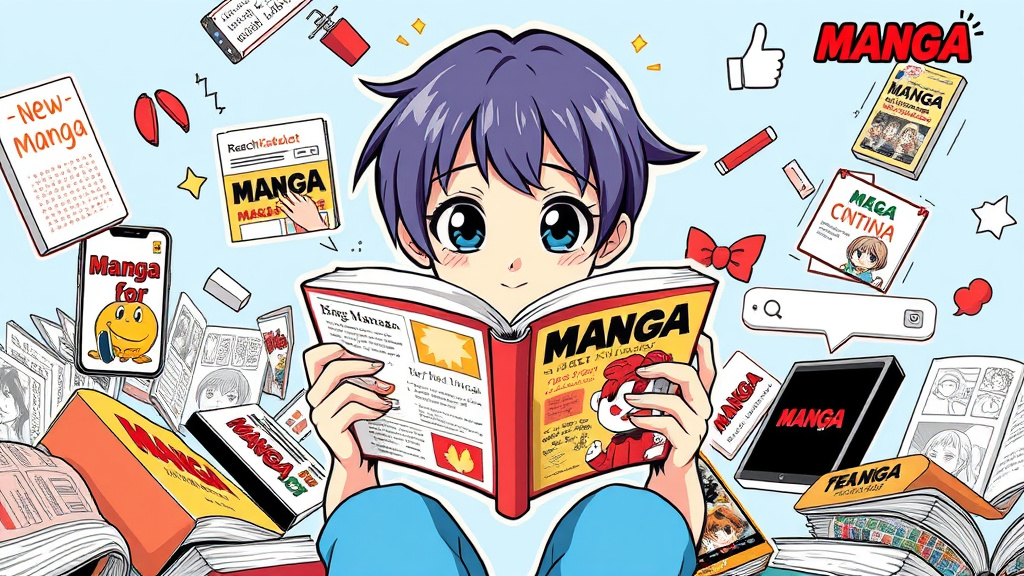The term manhwa anime manga encapsulates a vibrant and dynamic universe of storytelling that spans traditional print, animated adaptations, and digital art forms. These mediums, rooted in distinct cultural origins, are now intertwined in a global cultural phenomenon, shaping entertainment trends, influencing visual aesthetics, and fostering passionate communities worldwide. As they continue to evolve, understanding the nuances and mutual influences of manhwa, anime, and manga reveals a fascinating landscape of creativity, innovation, and cultural exchange.
The Explosive Intersection: Manhwa, Anime, and Manga's Global Ascent
The convergence of manhwa, anime, and manga has sparked an unprecedented cultural explosion that transcends regional boundaries. Originally confined within their native Korea, Japan, and other Asian countries, these art forms have now become worldwide phenomena, driven by rapid technological advances and globalization. Online platforms like Webtoon, Crunchyroll, and manga aggregators have democratized access, allowing fans from all corners of the world to discover, share, and discuss their favorite stories. This interconnected ecosystem fosters cross-pollination of ideas, art styles, and storytelling tropes, resulting in a multicultural palette of narratives that appeal across language and cultural barriers.
This ascent is not merely about popularity but also about influence. Many Western creators now draw inspiration from manhwa's distinctive aesthetic and narrative pacing, while anime and manga series frequently incorporate Korean themes and aesthetics. The fluidity with which these mediums influence and reinforce each other underscores their role as a collective force in modern entertainment. What's truly compelling is how this blending reflects broader societal shifts—embracing diversity, fostering inclusion, and celebrating storytelling as a universal language that can bridge worlds and communities.
 Hình minh họa: manhwa anime manga – manga mode
Hình minh họa: manhwa anime manga – manga modeFrom Page to Screen: Tracing the Artistic Evolution Across Manhwa, Anime, and Manga
Tracing the artistic evolution from manhwa, anime, and manga reveals a shared yet distinct journey of visual storytelling. Manga traditionally features black-and-white line art, emphasizing speed and simplicity, which allows for intricate storytelling even on limited budgets. Manhwa, on the other hand, has distinguished itself with full-color pages, often adopting webtoon formats that facilitate scrolling and digital consumption. These differences in presentation not only reflect technological advancements but also influence narrative delivery—color and format can evoke different emotional responses and pacing.
The transition from page-based to animated formats further exemplifies their mutual influence. Anime, which often adapts manga stories into vibrant motion pictures, possesses a storytelling rhythm shaped by both its source material and unique animation techniques. Conversely, some anime are inspired directly by manhwa, bringing Korean art styles and storytelling approaches into a predominantly Japanese medium. This cross-adaptation process enriches each medium, pushing boundaries and inspiring artists and animators to experiment with new styles, techniques, and storytelling methods—at its core, this evolution highlights a shared commitment to visual storytelling that continues to captivate audiences worldwide.

Narrative Powerhouses: Exploring Storytelling Tropes in Manhwa, Anime, and Manga
Underlying the visual splendor of manhwa, anime, and manga are storytelling tropes that serve as cultural signposts and emotional anchors. From the resilient hero's journey to complex romantic entanglements, these mediums employ familiar themes that resonate universally. Manhwa often emphasizes introspective characters and social issues, reflecting South Korea’s societal nuances, whereas manga and anime frequently explore themes of friendship, perseverance, and morality rooted in Japanese culture.
What makes these storytelling tropes compelling is their adaptability; creators modify these formulas to explore new angles or challenge conventions. The phenomenon of "second chance" romance or anti-hero archetypes appearing across all three mediums showcases how storytelling tropes evolve through different cultural lenses. Personal analysis suggests that this adaptability—and the willingness of creators to subvert or refine traditional tropes—keeps these art forms fresh and relevant, appealing to both long-time fans and newcomers discovering these stories for the first time.
Visual Spectacle: The Distinctive Art Styles of Manhwa, Anime, and Manga
The visual language of manhwa, anime, and manga is both unique and influential. Manga traditionally uses black-and-white line art, with an emphasis on expressive character designs and dynamic action sequences. Its minimal color palette allows artists to focus on storytelling and character development without the distraction of color. On the other hand, manhwa embraces full-color illustrations and a digital-first approach, often characterized by sleek, vibrant visuals that capitalize on webtoon formats designed for scrolling. This creates a more immersive and engaging experience for digital-native audiences.
Anime, meanwhile, excels in transforming static images into animated spectacles that bring characters and worlds to life with movement, sound, and voice acting. The artistry involved ranges from highly detailed backgrounds to stylized character designs influenced by both traditional manga and modern digital techniques. A personal insight is how each medium’s art style profoundly influences viewer perception—manga’s simplicity invites imagination, manhwa’s richness offers vividness, and anime’s motion creates visceral emotional responses. Together, these visual stylistic differences form a tapestry that continually pushes the boundaries of digital art and animation.
Cultural Exchange: How Manhwa, Anime, and Manga Shape and Reflect Global Trends
Cultural exchange has been at the heart of the manhwa, anime, and manga phenomenon, shaping and reflecting broader societal trends. These art forms serve as platforms for exploring social issues, such as mental health, gender dynamics, or political unrest, often surprising global audiences with their candor and depth. For example, manhwa has gained recognition for its nuanced portrayals of Korean society, while anime and manga have historically incorporated Japanese cultural staples like traditional festivals or folklore, making them accessible yet educational for international viewers.
Moreover, this exchange fosters mutual influence, with Western creators adopting Japanese and Korean storytelling sensibilities, and vice versa. This blending has given rise to hybrid genres like "isekai" (other-world) stories or “webtoons” that incorporate Western graphic novel aesthetics. Personally, it strikes me that these cultural exchanges go beyond mere entertainment—they foster understanding, challenge stereotypes, and contribute to a global dialogue. As these mediums evolve, they continue to serve as cultural ambassadors, shaping perceptions and fostering inclusivity between diverse communities.
The Rise of Webtoons: Manhwa's Digital Dominance and its Influence on the Landscape
Webtoons have revolutionized the manhwa landscape, transforming traditional print comics into an accessible digital format that emphasizes ease of consumption. Platforms like LINE Webtoon and Tapas have democratized access, allowing creators from diverse backgrounds to produce and share stories without the traditional barriers of publishing. This shift has also facilitated diverse narratives that may have been marginalized or overlooked in mainstream publishing, giving voice to underrepresented communities and experimental storytelling styles.
This digital dominance influences artistic innovation as well, with artists exploring new visual techniques and storytelling formats optimized for scrolling, such as animated effects or interactive elements. In my personal analysis, this evolution democratizes not only content creation but also fandom itself—allowing audiences to connect directly with creators and participate in shaping the culture. Overall, webtoons are catalyzing a new era of manhwa, generating global appeal and setting new standards for sequential storytelling across digital landscapes.
Adaptation Alchemy: The Art of Translating Manhwa, Anime, and Manga for New Audiences
Adapting manhwa, anime, and manga for new audiences is akin to alchemy—balancing fidelity to original content with cultural localization. Preservation of core themes and characters often faces the challenge of making stories culturally accessible without diluting their essence. For example, licensing negotiations and translation nuances can influence how humor, idioms, or cultural references are conveyed. Quality dubbing and subtitling contribute significantly to how well these adaptations resonate with international viewers, making the difference between a lukewarm reception and a global hit.
In my view, successful adaptation involves a deep understanding of both source and target cultures, ensuring that stories retain authenticity while appealing to diverse sensibilities. The growing reliance on international collaboration and digital tools fosters a more inclusive approach to adaptation, which ultimately helps these stories transcend linguistic and cultural boundaries. This process transforms localized art into global phenomena, breeding a worldwide community united by shared appreciation for compelling narratives and spectacular visuals.
Fan Communities and Fandom: The Driving Force Behind Manhwa, Anime, and Manga's Popularity
Fan communities are the heartbeat of the manhwa, anime, and manga phenomenon, fostering an environment of shared passion, creativity, and mutual support. Online forums, social media, and conventions enable fans to connect, discuss theories, create fan art, and even produce fan fiction. Their enthusiasm drives the popularity of series, often sustaining long after official releases, creating a cycle of engagement that is both organic and powerful. Fandoms often influence industry decisions, advocating for localized content, diverse representation, and new distribution models.
From my perspective, these communities exemplify how collective passion amplifies the impact of these art forms. The accessibility of digital platforms allows for decentralized participation, democratizing influence and ensuring that creators receive immediate feedback. Moreover, fandoms foster a sense of belonging across cultures, turning consumers into active participants in shaping the future of manhwa, anime, and manga. This symbiotic relationship underscores that their explosive rise is as much driven by passionate fans as it is by talented creators.
Genre Exploration: A Deep Dive into the Diverse Worlds of Manhwa, Anime, and Manga
The diversity of genres within manhwa, anime, and manga forms an expansive universe that invites exploration. From action-packed shonen and heartfelt shojo romances to psychological thrillers and avant-garde experimental stories, these mediums cater to every taste. Manhwa often delves into mature themes and social commentary, offering a nuanced approach, while anime and manga excel in creating immersive worlds—be it fantasy, sci-fi, horror, or slice of life—that reflect societal aspirations and anxieties.
What strikes me is how genre blending is becoming increasingly prevalent, challenging traditional boundaries and creating hybrid categories like "isekai romance" or "cyberpunk supernatural." This genre fluidity reflects the contemporary cultural climate—embracing complexity, diversity, and innovation. Each genre's distinct storytelling tools enrich the tapestry of manhwa, anime, and manga, fueling creativity and inspiring both creators and fans to venture into uncharted narrative territories.
The Future of Sequential Art: Innovations and Trends in Manhwa, Anime, and Manga
Looking ahead, the future of manhwa, anime, and manga promises exciting innovation and ongoing evolution. Technological advancements, such as augmented reality, virtual reality, and AI-assisted creation, will push the boundaries of visual storytelling, offering immersive experiences previously thought impossible. Additionally, the integration of interactivity within digital comics and animations could redefine engagement, making stories not just passive entertainment but participatory experiences.
From my perspective, a key trend will be increased cultural hybridity, as creators leverage global influences to craft stories that resonate across borders. The rise of eco-conscious themes, mental health narratives, and social justice issues within these mediums suggests that future stories will be more relevant and reflective of societal shifts. Ultimately, innovations in distribution and creation will continue to expand access, diversify voices, and elevate storytelling standards—ensuring that manhwa, anime, and manga remain at the forefront of global entertainment for years to come.
Conclusion
The dynamic evolution of manhwa, anime, and manga exemplifies how storytelling, visual artistry, and cultural exchange forge powerful global connections that transcend borders. Their intersectionary growth—from page to screen, from traditional to digital—is a testament to human creativity's boundless nature. Driven by passionate fandoms, innovative creators, and technological advancements, these art forms continue to redefine entertainment, inspire cultural dialogue, and invite audiences into limitless worlds of imagination. As they shape the future of sequential art, the shared language of stories promises an exciting journey ahead—where every new chapter bridges worlds and celebrates diversity across the globe.





